Research: Education by Design
The idea of design
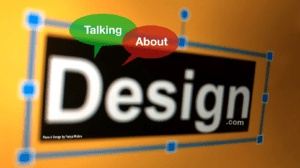
Design is core to my identity, to who I am. Education is the space within which I function but I try to approach everything I do as a designer.
Herb Simon, in his book, The Sciences of the Artificial, famously wrote:
Everyone designs who devises courses of action aimed at changing existing situations into preferred ones.
In one fell swoop, Simon situated design as playing a role across a range of human-centered professions, whether it be graphic design, architecture, medicine, or social policy.
And most relevant to us: Education.
Which is why I prefer to call myself an educational designer (rather than educational researcher). I see the world through the lens of design. Everything in the world around me, education, parenting, research, to me are enriched by taking on this perspective: a design lens as it were.
It is no surprise, thus, that one of my favorite courses I teach is called Education by Design. The course intro is as follows:
DCI 691 (Education by Design) is a course about design. Design as a way of thinking and as a process that values collaboration, context, and diverse perspectives. Design as an approach that generates creative solutions to complex (wicked) problems of practice, particularly in education.
Design is both a noun and a verb, a product and a process. Design is central to the construction of any process or artifact—be it a website or a car; an ATM machine or educational policy. Design touches on many different disciplines—science, technology, engineering, education, psychology, sociology, organizational behavior, and art, to name a few. A multi-dimensional issue like design, particularly in education, requires a multifaceted approach.
for The 5 spaces for design in education
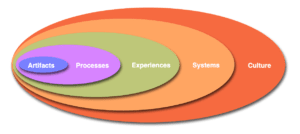
Everything in education is designed (one can argue whether this is intentional or not or whether the outcomes are the ones we want/like) but the broader point is that there is nothing “natural” about the systems of education we have around us. They are constructed by us, by humans. Whether the idea of the curriculum or seat-time, learning metrics or the idea of problem-based learning, or the idea of school, these are all human creations, structures adapted for some purpose (to quote Perkins and his definition of design).
That said, there is something fundamentally different about designing a textbook v.s. a chair; or designing a school v.s. designing an instructional plan. The differences have as much to do with the scale and the complexity of the tasks as it has to do with human psychology i.e. people’s desires and needs. That is not all. Everything we do in education works within broader organizational, policy and information structures that constrain and guide what we can do, and the complex feedback loops that can emerge from the inherent complexity (wickedness) of the enterprise. What this means is that designers have to function differently depending on the “space” they are working within.
In our recent work, Melissa Warr and I, have been developing a framework that we are calling the Five Spaces for Design in Education. In brief, we argue that it may be productive to think of five spaces for the design in education: artifacts, processes, experiences, systems and culture. Moreover, working within these spaces requires different tools, elements, practices, knowledge and judgement that we as designers need to bring to the task.
The best introduction to the FIve Spaces Framework is a series of videos made for ASU’s Learning Sparks series. You can find all the videos here: 6 videos (on the 5 spaces for design in education
In addition Melissa Warr maintains a page on the talkingaboutdesign.com website that lists all the publications/presentations that have emerged from this line of work.
My journey through design
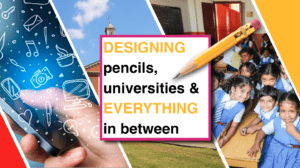
I was invited to give a keynote at the 50th Anniversary of the Industrial Design Center. It was here at IDC that I was introduced to the idea of design—something that I did not know much about before, but something I seemed to fit right into. I took this as an opportunity to look back over my journey through design and education. You can read more about it – and watch the video here.
Designing Theory
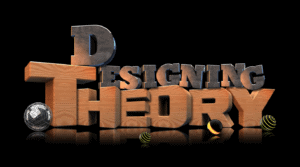
Theories play a critical role in the development of a discipline. Theories allow us to understand, explain and predict phenomena in the world. That said it is often difficult to say just where theories come from. The standard model—that data lead to laws, that in turn lead to theories—has been undermined by philosophers of science for a while now. They argue, and I would suggest rightly, that theories are often under-determined by data, i.e. there is never enough data that will, inevitably, lead us to a particular theory. This situation is particularly problematic given the important role theories play in scholarly lives.
In Warr, Scragg & Mishra (2020) we argue that it may be productive to see the development of theory as being akin to a process of design —that of creating an artifact (albeit a conceptual one) that has “a structure adapted to a purpose” and demonstrates “goodness of fit. We argue that, viewing theory development as an act of design might lead to a stronger theoretical and practical scholarship and can help us address some key challenges in the field.
Teachers as Designers
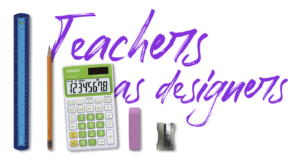
What does it mean for a teacher to be described as a designer, or for the act of teaching to be considered an act of design?
The paper cited below is a synthesis of 10 years of educational research into the idea that it is productive to see educators as designers—as designers of curriculum, designers of learning experiences. We analyzed citation patterns of key journal articles to (a) identify emergent clusters or strands of work; and (b) the manner in which the roles teachers play as designers varies across time.
Warr, M., Mishra, P. (2021). Integrating the discourse on teachers and design: An analysis of 10 years of scholarship. Teaching and Teacher Education. https://doi.org/10.1016/j.tate.2020.103274
Abstract: This article presents a content and network analysis of a decade (2007 – 2017) of highly-cited literature on teachers and design. Constructs and definitions were compared in an interpretive content analysis, resulting in 10 strands, each a cluster of literature that frames teaching and design in a particular way. A citation network analysis provided insight into how the strands are conceptually related. Further analysis highlighted how each strand described what, when, and how teachers design, and the value of considering teachers as designers. The results suggest that teaching not only includes design activities, but could be considered a design profession. This perspective has implications for teacher education, specifically the development of professional knowledge.
More here.
Blog posts related to Design
6 Videos (on the 5 spaces for design in Education)
Learning Sparks is a new initiative at ASU that feature short, 5-minute, videos showcasing the expertise of a range of ASU faculty members. These videos are carefully crafted, with high-production values seeking to capture big ideas in bite-sized chunks. A few months...
Talk at Fulton School of Engineering
Last August I was invited to speak at an event organized by the Ira Fulton School of Engineering's Learning and Teaching Hub. For some reason I had not posted about it — so better late than never... here it is, a 30 min talk followed by QnA....
TED talk: How to design a school for the future
My TED talk, titled How to design a school for the future just went live this morning. Sadly, I was traveling in India when the recordings were scheduled so I missed the whole "standing on the red-dot" looking like a thought leader who will give a talk that will...
On designing aesthetic educational experiences in science
What is the role of beauty (and aesthetics) in science in science education? This is something that I have been interested in for a long time, going back to highschool. Over the years I have built a small body of scholarship around this topic. Sadly, this work does...
Plugin’ into superpowers
I have been playing with couple of the newly released ChatGPT plugins (you have to have the paid version to use them) and want to share some of my early experiments. The two I am going to talk about are the ChatWithPDF and the Wolfram plugins. Short answer, they are...
We Have Always Been Rhizomatic
Danah Henriksen and I were recently asked to write a foreword for a book titled New Directions in Rhizomatic Learning: From Poststructural Thinking to Nomadic Pedagogy edited by Myint Swe Khine. This was a fun foreword to write and allowed us to explore a range of...
Coding with ChatGPT3: On gaining a superpower
I had heard that ChatGPT3 could help with writing code and just hadn't much time to play with it. Part of the reason is that I haven't really coded in almost 2 decades (maybe more) so was somewhat hesitant to jump in. But again I kept reading of people doing amazing...
Gilbert Daniels, the gardener who changed our world
Note: I wrote and submitted this piece as an op-ed to the Indianapolis Star to be published on April 14, 2023, exactly 3 years after they had published Gilbert Daniels' obituary. It would have helped set the record straight about his amazing contribution to the world...
Bringing Design to Education: Benjamin Cluff Jr. Lecture at BYU McKay School of Education
I was recently invited to present the Benjamin Cluff Jr. Lecture by the dean and faculty at the Brigham Young University, McKay School of Education. I had a short but lovely visit, meeting old friends, and making new ones. We had some wonderful conversations, over...
A chat about GPT3 (and other forms of alien intelligence)
We recently celebrated the 10-year anniversary of writing a regular column series on Rethinking Technology & Creativity in Education for the journal TechTrends. Over the next few articles in this series, we are going to dive deeper into Artificial Intelligence...
Tell me a story: Delightful design in an airport
“Design doesn’t need to be delightful for it to work, but that’s like saying food doesn’t need to be tasty to keep us alive” — Frank Chimero I am always looking for examples of good and bad design in the world around me. Good design is rare, functional and at the same...
Using AI to digitally clone myself (AKA creating a Puny-Punya)
Note: The photo-manipulated image of me holding my own head was created almost 20 years ago by Paul Kurf, a student in my learning by design, class! Image design & layout, Punya Ethan Mollick is a professor at Wharton and he has been doing some of the most...
Good to be back, SITE 2023 New Orleans
The Society for Information Technology in Teacher Education conference has been an important part of my professional life for over two decades. My first presentation at a SITE conference was back in 2001 at Orlando, Florida, with none other than Matt Koehler. For the...
From Crayons to AI: New article (10 years of writing)
Ten years ago, we, The Deep Play Research Group, were invited to write a regular series of articles for this journal exploring the relationship between technology, creativity and learning. To celebrate this anniversary, we decided to write two summary/ synthesis...
Learning styles in the classroom? What BS! (But Bing Chat doesn’t care.)
One of the most enduring myths in education is that of learning styles. I had written about it back in 2009 in a blog post titled: Teaching to learning styles: What hogwash. But it a myth that does not seem to go away, maybe because it seems to have some kind of...
Punya Mishra
Associate Dean of Scholarship & Innovation
Professor, Division of Educational Leadership & Innovation
Mary Lou Fulton Teachers College
Arizona State University
Email: punya[dot]mishra[at]asu.edu
Web: punyamishra.com
LinkedIn: PunyaMishra
Twitter: @punyamishra
©
All the content (text, images, photographs, videos) on this site have been created by me, Punya Mishra, (unless specified otherwise). I would like to thank the artists/photographers/designers who have made their work freely available for re-use on sites such as Wikimedia Commons, Pixabay and Unsplash. Most of the graphics I create build on your generosity, and I am deeply grateful.
This website is designed and maintained by me, Punya Mishra, using WordPress combined the Divi plugin and is hosted on Cloudways.
